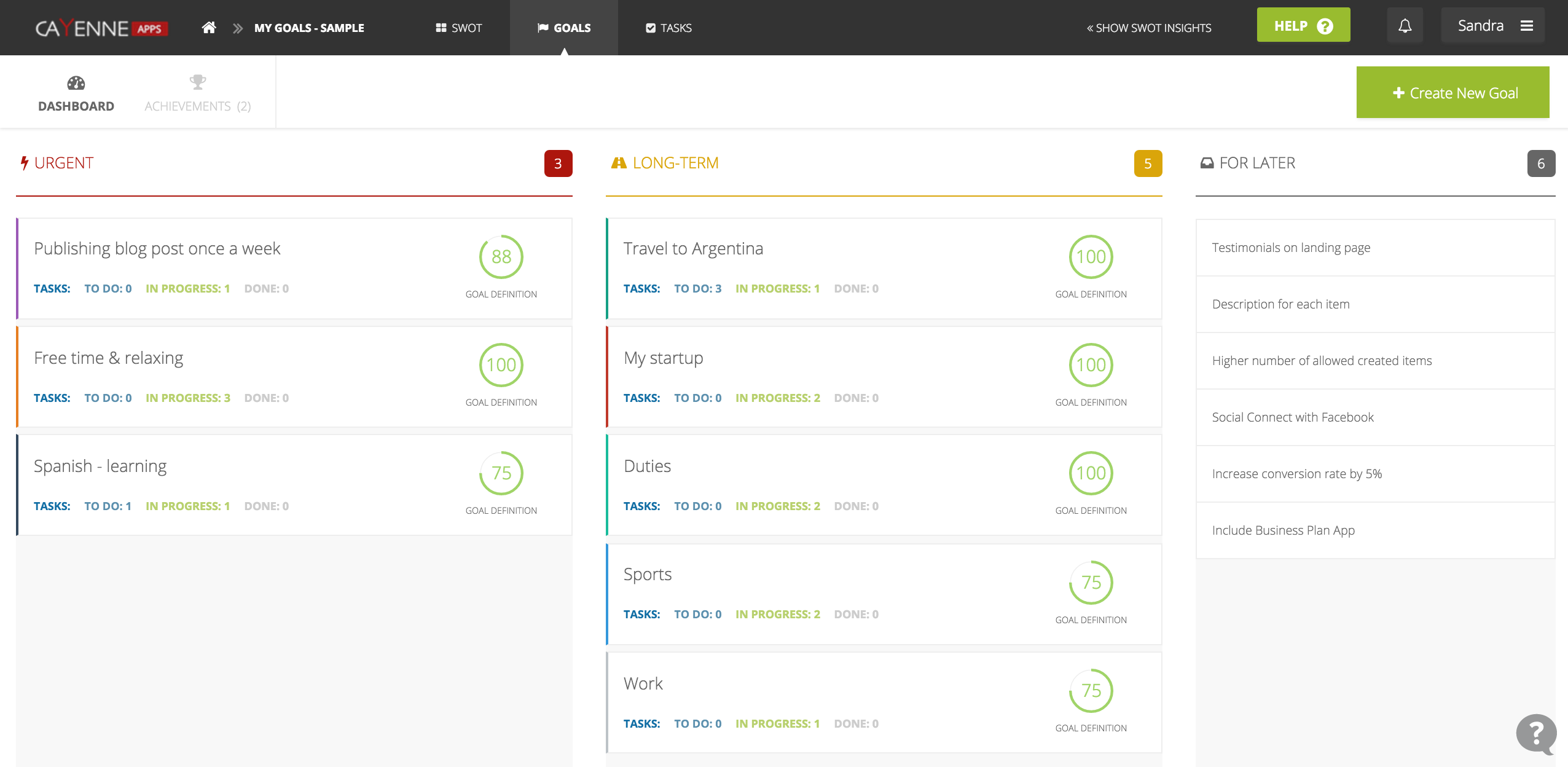In our previous article we offered you some advice that can help us to keep our motivation on a high level, which is, in a nutshell:
- Prioritization of our goals and deciding which objectives will bring us the greatest value,
- Keeping our tasks small and constantly tracking our progress,
- Small but persistent changes will bring us, significant, long-term results,
- Always ask ourselves why we want to achieve this goal, what the purpose is and what result we expect after accomplishing this particular goal.
And last but not least, when we have achieved our goal we can not forget about celebrating, which will help us to pause and really reflect on what we’ve used our time and energy for. This embracing of our success can act as a wonderful incentive to keep moving on with our important work.
Today, we would like to share our four-step process with you that utilizes the hints described above, and is based on efficient techniques that we will introduce and explain along with their psychological aspects.
Discover your long-term priorities with SWOT
In the first step we will encourage you to conduct a SWOT analysis that will concentrate around finding out what your current situation is and what your opportunities and threats are. Furthermore, you will learn how your current assets and weaknesses are connected with your opportunities and threats.
Of course you may want to take a shortcut and skip this step by moving immediately to the process of listing your goals, but we do not recommend this approach.
As an outcome of this analysis, you will received invaluable insights for creating a long-term action plan, and you will have the possibility to:
- sum up where you are at the moment as a team, company, or person in your developmental process,
- plan your directions and specify where you would like to be in the future.
We have already described this step in detail. You can find this article here.
Write down your goals
One thing that a lot of very successful self improvement writers such as Brian Tracy, Zig Ziglar, Anthony Robbins emphasize is the importance of writing down goals. A goal that is written down can bring you clarity and focus. It can give you direction and a declaration of where you are headed.
Evidence of the efficacy of written goals lies in a study conducted during 1979 Harvard MBA program, where graduate students were asked “have you set clear, written goals for your future and made plans to accomplish them?” The results: only 3% had written goals and plans, 13% had goals but they weren’t in writing, and 84% had no goals at all. Ten years later, the same group was interviewed again and the result was absolutely mind-blowing.
The 13% of the class who had goals, but did not write them down was earning twice the amount of the 84% who had no goals. The 3% who had written their goals down, were earning, on average, ten times as much as the remaining 97% of the class combined!
So, as was proved in the research, the very act of writing down your goals vastly increases your possibility of success. This is an activity that we would encourage you to not pass up; after all who wouldn’t like to be in the top 3%.
In addition to the previously mentioned benefits, the process of writing down your goals also frees up your memory to be occupy with more important things, and allows you to be less stressed and more concentrated on crucial activities.
Our memories, in many cases, are also not very reliable. Every time we remember something we recreate what happened, rather than just replaying a film from our mental archives. During the process of recreation, we tend to leave out some details and change those that are uncomfortable for us. So, our memory can be like a leaking bucket.
So, take your time, and list everything that you have always wanted to accomplish or have always dreamed about.
You can look for inspiration in the results of your SWOT analysis that contains the overview of your current situation and suggestions for future actions.
Your goals can be short-term as well as long-term. Remember, the sky is the limit.
Prioritize: Important vs. Urgent
Research indicates that white collar workers spend a great deal of their time—an average of 41%—on unimportant activities. So, why do they keep engaging in them? Because ridding oneself of unnecessary work is easier said than done. We instinctively stick to tasks that make us feel busy and that seem to be urgent.
It’s just human nature to give more weight to things that are right in front of our noses, so we need to use our willpower to make up the difference between the strength of our immediate desires and the importance of our long-term goals.
We can efficiently address this problem in our day-to-day work by method that was used by U.S. President Dwight D. Eisenhower, and is outlined in a quote attributed to him:
What is important is seldom urgent and what is urgent is seldom important.
At first, we take one particular goal, and then answer the questions: “is this important” “is this useful?” “will I (or we as a team) be satisfied with how I (we) have used my (our) time and energy?”.
At this stage, we need to distinguish important issues from urgent ones that seem to be important, but actually are traps set by our mind that add additional priorities to activities that require as to put out fires, but produce little value at the end.

So, our goal is to move the most urgent tasks to the long-term goals section, and put off all unimportant issues and come back to them if you have some spare time.
By focusing our efforts on working on fewer but more important items at the same time, we will get more done. Lots more, actually. And we will feel less stressed.
Try out this approach for yourself, and now move the most important objectives from left to right and categorize them from the perspective of time.
At the end of the day, when you will have accomplished one small but important objective, you will actually feel more fulfilled than after accomplishing several less important ones.
Add your purpose and the definition of “done”
The more compelling that you can make your long-term desire, the less willpower you will need to close the gap between planning and acting.
In order to do this, we keep before our eyes only those goals that we are currently working on. We also need to constantly remind ourselves “why” we want to achieve this goal, and what reward or improvement stands behind this particular goal. And, as we proved in our previous article, knowing “why” is a highly efficient motivator.
Furthermore, we also ponder and describe how we will recognize when the goal has been accomplished. The vision that we will have of ourselves after achieving these goals will give us additional strength to pursue further goals.
So, we encourage you to write down the purposes for and the reasons why you consider these particular goals to be the most important, how you will recognize that you have accomplished them and keep reminding yourself of these important points as many times as you can.

Plan and Act:
Visualizing your work and workflow carries with it many benefits, beginning with how our brains process information. The human brain can input visual information 60,000 times faster than written information. Since Kanban boards create a “picture” of your work, a visual display can make it quicker and easier for you to understand status and progress.

Kanban board can also place limits on your work In progress, and show you how fast your progress is. No matter how small it will be, it can motivate you to keep pushing forward, and to keep challenging yourself, day after day.
With this in mind, start your process of planning:
- Write down all tasks that may bring you closer to accomplishing your goal. One task can address a couple of your goals. All added tasks will be automatically placed in the “To do” section.
- Then, choose the tasks which will bring you the greatest value and move them to the “In progress” section.
- Focus your efforts on working on fewer items at the same time - you will get more done.
- All completed items are moved to the “Done” column.
At the end of the process set a due date for your goal, which will specify a timeframe for your actions.
Research suggests that the average person who is given two weeks to complete a task will instinctively adjust his effort so it actually takes exactly two weeks.
On the other hand, we are familiar with the Zeigarnik Effect, according to which it seems to be human nature to finish what we start and, if it is not finished, we experience disappointing. As an example we can recall a study in which participants received “brain buster” puzzles to complete, but not enough time to complete them. The surprising thing was, even when participants were asked to stop, over 90% of them went on to complete the puzzles anyway.
Due to the above mentioned facts, as a general rule we should keep our due dates close and avoid postponing them. We have addressed this issue by putting more effort on decreasing the size of our goals and task. We can chart our progress, and see that we will indeed finish, and, as mentioned before small but persistent change will bring us big results in long-term.

Summary:
Rome wasn’t built in a day; likewise, successful people don’t always know the right answer, but they keep moving anyway. Taking action will lead to answers, so don’t let obstacles stall you when you’re searching for the right solution.
You definitely are ready to spread your wings and take action right away. You can do this with your new plan.

In our next article we will focus on finding ways to make use of this special time of the year, and share with you our thoughts about New Year’s Resolutions. Stay tuned!







Thanks for this
Success is intentional and starts with well defined goals. Thanks for the strategy.
very good suggestion, if followed honestly positive result will
Cool stuff!!
Great to hear this Thank you!
Thank you!
Enjoyed the post
Well structured and extremely instructional article. Thank you! Written with the learner in mind.
important for an individual who is not successful in his plans
Very well explained.
Great simply stated in simple terms to achieve great goals. Working with mind body soul written plans Well achieve abundance which comes in more than one form other than money I well try it. The seat plan wow I like it the you.